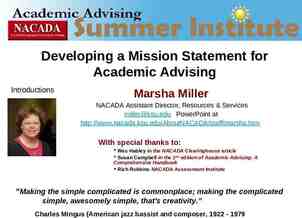Customer Leadership Processes Communication Financial People Personal
22 Slides1.29 MB

Customer Leadership Processes Communication Financial People Personal Personal Files Files vs. vs. Federal Federal Records Records Records Records Management Management Executive Executive Briefing Briefing Records Management Division U.S. Army Records Management & Declassification Agency Army Headquarters Services Office of the Administrative Assistant to the Secretary of the Army 14 June 2012

Customer Leadership Processes Communication Financial People Agenda Agenda What are Federal Records? What are Personal Files? Why should I manage these records? What are the issues? What can I do now? What are some examples of personal file collections at the MHI and what services do they provide? Summary Points of contact

Customer Leadership Processes Communication Financial People What What are are Federal Federal Records? Records? Information created or received by an agency of the United States Government that is preserved or appropriate for preservation that documents agency operations or other activities of the Government, regardless of medium.

Customer Leadership Processes Communication Financial What What are are Personal Personal Files? Files? Personal files are copies of documents reflecting significant decisions, events, or transactions accumulated by senior officials because of their official positions and personal involvement. Personal files may include diaries, journals, notes, and calendars containing official schedules of meetings, appointments, field trips, or other official activities. People

Customer Leadership Processes Communication Financial Why Why should should II manage manage these these records? records? Public Law 106398 44 USC Chapter 31 36 CFR Part 1222 DODD 5015.2 AR 25-1 AR 25-400-2 AR 870-5 People

Customer Leadership Processes Communication Financial People Public Public Law Law 106398 106398 (e) Definitions. (1) “The term ‘United States Army Military History Institute’ means the archive for historical records and materials of the Army that the Secretary of the Army designates as the primary archive for such records and materials.”

Customer Leadership Processes Communication Financial People 44 44 USC USC Chapter Chapter 31 31 “The term "records" means all books, papers, maps, photographs, machine-readable materials, or other documentary materials, regardless of physical form or characteristics, made or received by an agency of the United States Government under Federal law or in connection with the transaction of public business and preserved or appropriate for preservation by that agency or its legitimate successor as evidence of the organization, functions, policies, decisions, procedures, operations, or other activities of the government or because of the informational value of the data in them.”

Customer Leadership Processes Communication Financial People 36 36 CFR CFR Part Part 1222 1222 Sec. 1222.32 General requirements. (a) “Identify and prescribe specific categories of documentary materials to be systematically created or received and maintained by agency personnel in the course of their official duties.” Sec. 1222.36 Identifying personal files. (d) “Materials labeled “personal,” “confidential,” or “private,” or similarly designated, and used in the transaction of public business, are federal records subject to the provisions of pertinent laws and regulations. The use of a label such as “personal” is not sufficient to determine the status of documentary materials in a federal office.”

Customer Leadership Processes Communication Financial People DODD DODD 5015.2 5015.2 DOD DOD Records Records Management Management Program Program 4. POLICY. “It is DOD policy to: 4.1 Create, maintain, and preserve information as records, in any media, that document the transaction of business and mission in wartime and peacetime to provide evidence to DOD Component organizations, functions, policies, procedures, decisions, and activities as provided in Chapter XII of 36 CFR, Chapters 29, 31, 33, 35 of 44 U.S.C.”

Customer Leadership Processes Communication Financial People AR AR 25-1 25-1 Army Army Information Information Management Management Chapter 8 - Records Management Policy 8-6. General policies “c. Army general officers and senior civilian executives (normally limited to SES grades) may place reference files that they create during their tenure of office with the Military History Institute.”

Customer Leadership Processes Communication Financial People AR AR 25-400-2 25-400-2 The TheArmy ArmyRecords RecordsInformation InformationManagement ManagementSystem System(ARIMS) (ARIMS) Chapter 2 - Identifying Recordkeeping Requirements 2-1. Prescribing directives “a. Proponents of prescribing directives will ensure that Army regulations and DA pamphlets identify recordkeeping requirements.” Records Retention Schedule-Army (RRS-A), https://www.arims.army.mil: Record Number 870-5g, Personal files: “Description: Senior officials, such as Army Secretaries, Under Secretaries, Assistant Secretaries, and general officers, often accumulate copies of documents reflecting significant decisions, events, or transactions in which they are personally involved because of their official positions. Disposition: On retirement or separation of the individual, transfer to the U.S. Army Military History Institute, Carlisle Barracks, PA 17013-5008. Earlier transfer is authorized.”

Customer Leadership Processes Communication Financial People AR AR 870-5 870-5 Military MilitaryHistory: History:Responsibilities, Responsibilities,Policies, Policies,and andProcedures Procedures Chapter 1-4. Responsibilities k. Military History Coordinating Committee “(1)(c) Director, U.S. Army Military History Institute (MHI). The institute is assigned to the U.S. Army War College and maintains a historical collection to facilitate and encourage the official and unofficial use and study of military history. The MHI acquires military history related holdings and serves as the Army’s central repository for non-record copies of historical materials. Holdings include books, manuals, periodicals, manuscripts, reports, diaries, personal files and correspondence, documents, photographs, tapes, and other non-record materials.”

Customer Leadership Processes Communication Financial People What What are are the the Issues? Issues? What can I take with me when I leave the office? (1) All personal and private files that do not contain references to official business. (2) Personal diaries, logs, notes, memoranda, tapes, disks, and summaries of telephone conversations, if all official information has been duplicated in official memoranda for record for retention in the official files. (3) Reference books and other personal items brought from private life. and .

Customer Leadership Processes Communication Financial People What What are are the the Issues? Issues? (cont’d) (cont’d) (4) Reference files consisting of extra copies of records that I drafted, reviewed, or otherwise acted upon while in office, provided they do not: (a) Diminish the official records of the agency. (b) Violate national security or confidentiality required by privacy or other interests protected by law. (c) Exceed normal administrative costs.

Customer Leadership Processes Communication Financial People What What are are the the Issues? Issues? (cont’d) (cont’d) What can’t I take with me when I leave the office? (1) The official record copy of any document. (2) Security classified documents. (3) Restricted or formerly restricted data documents. (4) Diaries containing official schedules of meetings, appointments, field trips, or other official activities. (5) Copies of records containing information exempted from public release under the nine exemptions of the Freedom of Information Act (AR 25-55) or Privacy Act (AR 340-21). and .

Customer Leadership Processes Communication Financial People What What are are the the Issues? Issues? (cont’d) (cont’d) (6) Any record, including any normally non-record copy, whose absence creates a gap in the files or impairs the logical sequence of essential documentation. (7) Records needed to transact the official business of the Army and any document which assists in the decision making process.

Customer Leadership Processes Communication Financial People What What are are the the Issues? Issues? (cont’d) (cont’d) What should I do if the distinction between personal or agency record is not clear? Decisions for determining which records will be incorporated into agency files, transferred to the U.S. Army Military History Institute, or removed from Army control are sometimes difficult. In those instances, these decisions should be coordinated with legal counsel, records officers, or other designated officials within the agency.

Customer Leadership Processes Communication Financial People What What can can II do do Now? Now? Avoid mixing personal files pertaining to private matters with official records by separating and controlling them at the time of creation. Obtain administrative approval to accumulate extra copies of work for reference convenience when needed. Prior to departing an agency, senior officials should contact the MHI for assistance in donating their personal file collections.

Customer Leadership Processes Communication Financial Personal Personal File File Collections Collections at at the the MHI MHI The MHI holds the files of over 400 Army General Officers. The files range in age from the 18th century to present, the majority of which are from Generals that served during or after World War II. No other institution or combination of institutions have as much material as the MHI on the Army’s senior leadership. General Officer files are among the MHI’s most significant and most extensively used holdings. Personal file collections from Army Chiefs of Staff and Combatant/MACOM Commanders include: Generals Abrams, Bradley, Franks, H.K. Johnson, Reimer, Schoomaker, Shinseki, Starry, Sullivan, Thurman, Vuono, Westmoreland, Wickham, and Zais. People

Customer Leadership Processes Communication Financial People MHI MHI Services Services Assist and advise you and your staff with any questions about transferring materials to the MHI. Pickup materials from your location. Provide postage-free mailing labels. Screen your collection for classified, personal/privacy information to ensure that materials being released are cleared. Maintain the collection in your name for generations to use when studying the Army.

Customer Leadership Processes Communication Financial People Summary Summary All official records are subject to life cycle management procedures and are the property of the federal government, not the military member or employee making or receiving them. Since no person acquires a proprietary interest in any official documentation by virtue of his/her military or civilian position, decisions for determining which records may be removed from Army control are best made by the agency rather than the individual. The Records Disposal Act specifies that records of the U.S. government may not be removed or destroyed except as provided under the act and none of its provisions permit agency officials to remove records.

Customer Leadership Processes Communication Financial People Contacts Contacts RMD E-mail: [email protected] MHI E-mail: [email protected] Websites: – NARA http://www.archives.gov/ – RMDA https://www.rmda.army.mil/ – MHI http://www.carlisle.army.mil/ahec/usamhi/






